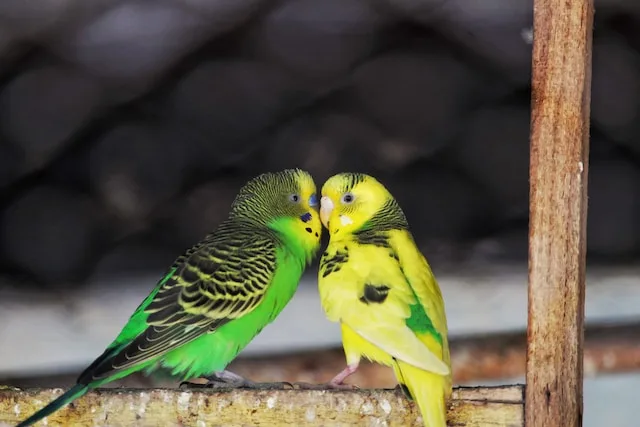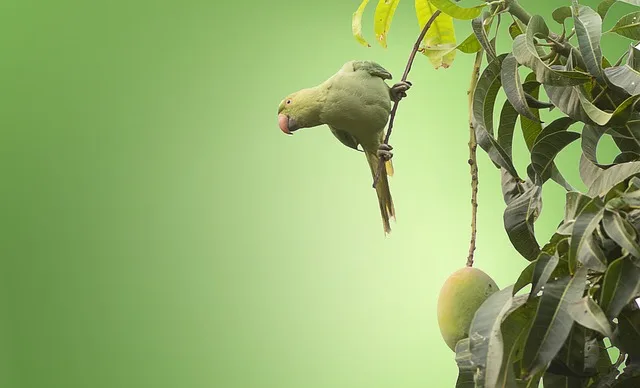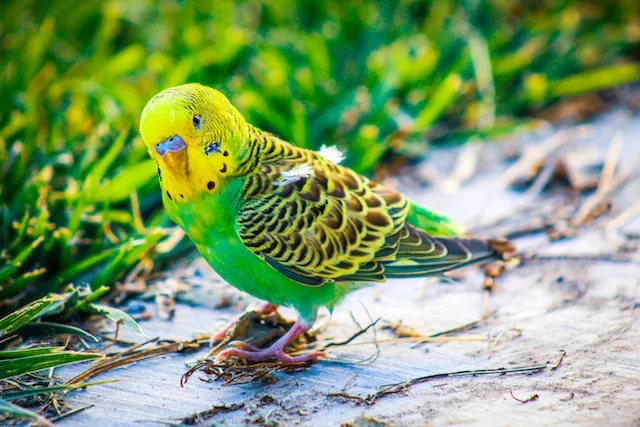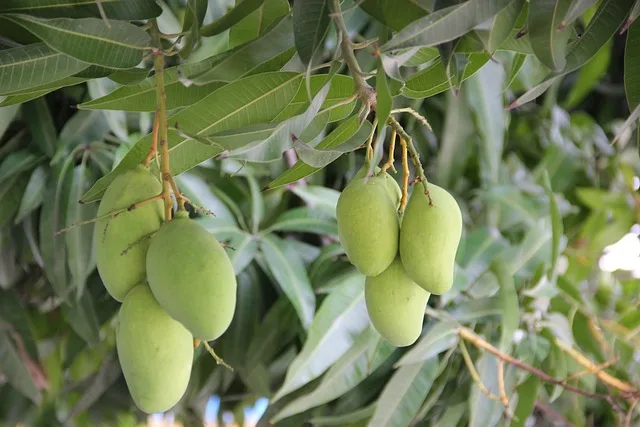Can Parakeets Eat Mango? This is an inquiry that frequently emerges among parakeet proprietors trying to give a different and nutritious eating routine for their cherished pets. It is an obvious fact that parakeets partake in a wide cluster of organic products, vegetables, and seeds, alongside their staple pellet food. The dynamic tones and flavours make supper time an interesting test for pet people. Mango, specifically, provokes the interest of many, inciting the question: Could parakeets at any point securely consume this tropical organic product?
The response is a reverberating yes! Parakeets can for sure appreciate mango as a component of their eating routine. Nonetheless, it’s urgent to comprehend the contemplations and potential dangers related to integrating mango into their normal dinners. In this article, we will dig into the security precautionary measures and risks related to taking care of mango to your parakeet. Moreover, we will investigate the ideal strategies for serving mango to guarantee a sound and adjusted diet for your padded companion.
Remain tuned as we uncover the security angles as well as the amazing advantages of taking care of mangoes for your parakeet. You’ll find the reason why this brilliant natural product can be an important expansion to your pet’s culinary collection. Thus, we should plunge into the universe of parakeet sustenance and get more familiar with the mango’s job in keeping your padded companion blissful and sound.
Table of Contents
What Is a Parakeet?
Parakeets, with around 115 species, are little, slim parrots known for their long tails. The famous budgerigar is a typical pet, while grass parakeets and Australian rosellas likewise have a place with the gathering. In South America, conures are leaned toward as little to medium-sized parakeets.
The line among parakeets and parrots can obscure, with bigger species now and again called both. Budgerigars rank as the world’s third generally well known pet. Find whether parakeets can appreciate mangoes and their likely advantages in this conversation.

The Benefits of Mango for Parakeets
Potassium: Potassium is a vital nutrient that plays a crucial role in the proper growth and development of parakeets. Mango is a rich source of potassium, ensuring that your bird receives this essential nutrient for optimal health.
Antioxidants: Mango contains polyphenols, which are powerful antioxidants. These antioxidants help boost the overall health of your parakeet and reduce the risk of diseases. Including mango in their diet can contribute to a stronger immune system and improved well-being.
Vitamin A: Parakeets that solely rely on a seed-based diet can be prone to vitamin A deficiency. This deficiency may lead to various health issues, including wheezing, swollen eyes, diarrhea, and more. While captive parakeets usually have a balanced diet, incorporating mango can help enhance their vitamin A levels and support overall health.
Niacin: Another important nutrient found in mango is niacin. Niacin works in conjunction with protein to promote muscle strength in parakeets. It also aids in reducing joint fatigue and maintaining healthy arteries.
By offering mango as a part of your parakeet’s diet, you provide them with essential nutrients like potassium, antioxidants, vitamin A, and niacin. These nutrients contribute to their overall well-being, supporting their growth, immune system, and muscle strength. Incorporating mango into their diet can be a delicious and nutritious addition to keep your feathered friend happy and healthy.

Beware the Bitter-Sweet: Potential Pitfalls of Mango for Parakeets
Pesticides: While mangoes are generally low in pesticides compared to other fruits, it is essential to be cautious. Even after washing the fruit, residual pesticides may remain. To minimize any potential risk, it is advisable to remove the skin before serving mangoes to your parakeet. Thoroughly washing the mangoes is also recommended to further reduce the pesticide exposure.
Sugar: Like many fruits, mangoes contain a significant amount of sugar. A single cup of mango can have over 24 grams of sugar. Excessive sugar intake can lead to weight gain and various health problems in parakeets. It is important to remember that moderation is key. To minimize the risk while still providing dietary variety, experts suggest limiting the portion of fruits to a small amount each day.
By being mindful of the negative aspects associated with mangoes for parakeets, such as the potential presence of residual pesticides and the high sugar content, you can take necessary precautions to ensure your pet’s well-being. Removing the skin and thoroughly washing the mangoes before serving them to your parakeet can minimize pesticide exposure. Additionally, offering mangoes in moderation as part of a balanced diet will help prevent excessive sugar intake and associated health issues. Prioritizing your parakeet’s safety and overall health will allow you to enjoy the benefits of mangoes as a treat while mitigating any potential risks.

How to Safely Feed Mango to Your Parakeet
Washing the Mango: Before feeding mango to your parakeet, it is crucial to wash the fruit thoroughly under cold water. This helps remove any potential pesticide residue that might be present. Using a fruit brush can be an effective tool for eliminating invisible chemicals, ensuring a cleaner fruit for your pet.
Preparing the Mango: Begin by cutting the mango in half to remove the large seed, which is harmless but not suitable for consumption. Once the seed is discarded, you can proceed to scoop or slice small pieces of fruit from the skin. Place the fruit pieces in a dish while discarding the skin once all the fruit is removed.
Incorporating Mango in the Diet: To include mango in your parakeet’s diet, consider adding a few pieces of fresh mango to their dinner salad, which can consist of a mix of fruits, vegetables, and commercial pellet food. This combination provides a balanced meal for your feathered friend.
Time Limit: It’s important to be mindful of the duration that mango remains available to your parakeet. After approximately three hours, remove any remaining fruit from their dish. This precaution is necessary as leftover fruit can begin to harbour harmful bacteria that may pose a risk to your pet’s health.
By following these steps and incorporating mango safely into your parakeet’s diet, you can ensure that they can enjoy the benefits of this delicious fruit while minimizing any potential risks associated with improper handling or bacterial growth.

Moderation is Key: Portion Control for Mango Consumption
When it comes to feeding mango to your parakeet, it’s crucial to exercise portion control due to its high sugar content. To prevent health issues such as diabetes and other related complications, it is recommended to limit the portion size.
As a general guideline, a serving of mango equivalent to the size of one or two grapes is appropriate for your feathered friend. By adhering to this portion size, you can enjoy the nutritional benefits of mango while mitigating the potential risks associated with excessive sugar intake. Remember, moderation is key when it comes to incorporating mango into your parakeet’s diet.
Adding Mango to the Fruit Variety: Frequency of Feeding
While mango offers beneficial nutrients for your parakeet, it’s important to provide a diverse range of fruits to satisfy their desire for taste and color variety. To keep your bird both happy and healthy, experts recommend incorporating several different fruits into their diet.
Since portion sizes for fruits are typically small, you will likely only be able to include mango once or twice a week as a small part of a more extensive selection of fruits. By offering mango alongside other fruits, you can ensure your parakeet enjoys a varied and balanced diet, providing both nutritional benefits and sensory stimulation. Remember, moderation and variety are key when it comes to feeding mango and other fruits to your feathered friend.
Summary
“Unlock the tropical goodness for your parakeet’s delight! Discover how to safely introduce mango into their diet while maintaining variety, moderation, and optimal health.”
Dr. Chandrika Tweet
In summary, mango can be a nutritious addition to your parakeet’s diet, offering several benefits. It contains essential nutrients such as potassium, antioxidants, vitamin A, and niacin, which support proper growth, immune health, muscle strength, and overall well-being. However, there are important considerations to keep in mind when feeding mango to your parakeet.
To ensure safety, it is crucial to wash mangoes thoroughly to remove any pesticide residue. Removing the skin and serving only the fruit can further minimize pesticide exposure. Additionally, portion control is essential due to the high sugar content in mangoes. Limiting the serving size to the equivalent of one or two grapes helps prevent weight gain and other health issues associated with excessive sugar intake.
Variety is key for parakeets, so mango should be part of a diverse selection of fruits in their diet. Offering mango once or twice a week, alongside other fruits, provides both nutritional benefits and sensory stimulation. It’s also important to remove any remaining fruit after a few hours to prevent bacterial growth.
By following these guidelines, you can safely incorporate mango into your parakeet’s diet, ensuring they enjoy the surprising benefits of this tropical fruit while maintaining their overall health and happiness. Remember, moderation, variety, and careful attention to safety are essential when feeding mango to your feathered friend.


